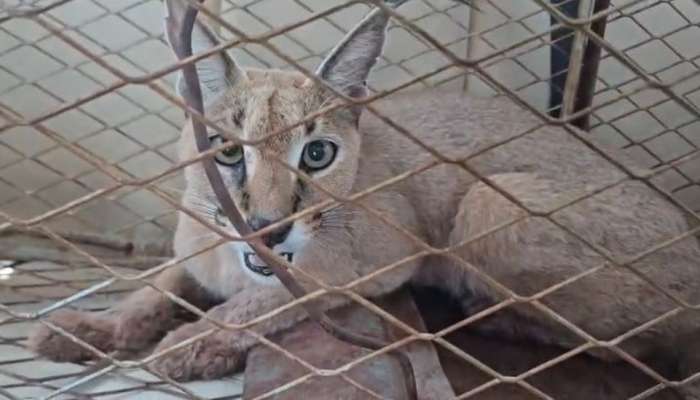
Khasab: The Environment Authority in Musandam Governorate has successfully rehabilitated and released a young Arabian lynx (locally known as Al Hamra’a) back into its natural mountain habitat, marking a new achievement in the field of wildlife protection.
A team of specialists from the Authority had spotted the animal during their periodic monitoring tours within the Natural National Park Reserve.
The animal showed signs of exhaustion due to hunger and thirst, prompting the team to immediately implement wildlife rescue procedures.
The lynx subsequently underwent intensive veterinary care and a rehabilitation program prepared by the Authority in Musandam Governorate to ensure its ability to reintegrate into the wild.
This operation is part of the ongoing efforts to monitor wildlife in the reserve, where specialists rely on periodic surveys using “camera traps” deployed in various locations across the mountainous areas.
This technology helps document rare species, such as the Arabian lynx, and monitor their behavior in their natural environment, noting that these animals are solitary by nature and are most active at dawn and dusk.
Data indicates a decline in the numbers of the Arabian lynx in some areas due to drought and seasonal scarcity of rain, which has led to the degradation of natural habitats.
This underscores the need to intensify efforts to conserve and rehabilitate all wildlife within the reserve.
The Arabian lynx is one of the key predators in terrestrial ecosystems, playing a pivotal role in regulating the numbers of prey such as rodents and birds, thereby maintaining ecological balance.
This animal is characterized by its agility, weighing between 10 and 20 kilograms and reaching a length of 60-90 centimetres. Its fur, which ranges from yellowish-brown to rusty red, along with its long ears adorned with black tufts, helps it camouflage effectively in its mountainous environment.
Furthermore, the vital role of the local community in Musandam Governorate is prominent in this context.
Their growing environmental awareness contributes to protecting biodiversity by reporting emergency cases involving wild animals or spotting rare species, forming an effective partnership with the Environment Authority.
These collective efforts affirm the Sultanate of Oman’s commitment to achieving sustainable development goals and preserving its natural heritage through initiatives that enhance cooperation between relevant institutions and the community to ensure the sustainability of these wildlife treasures for future generations. -ONA